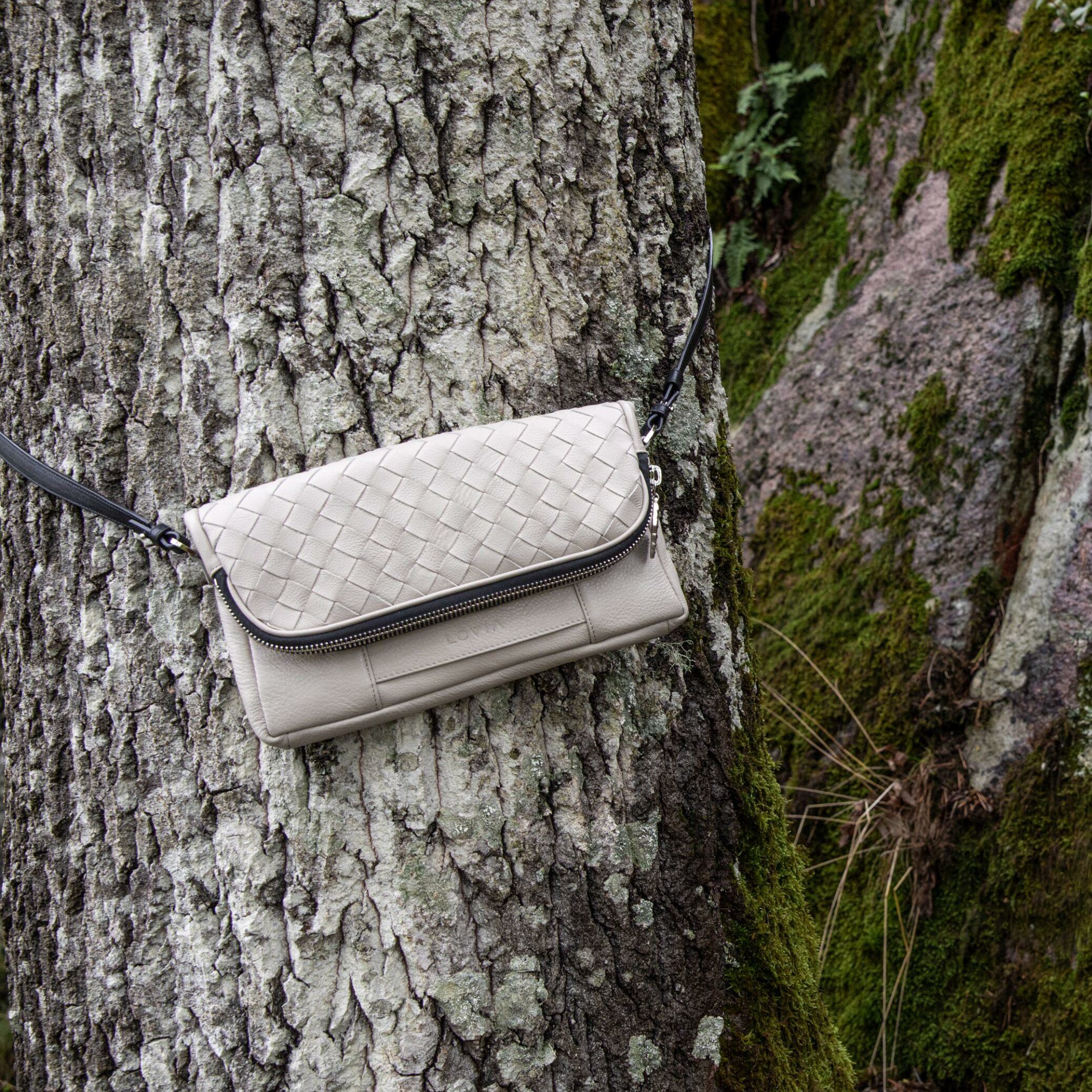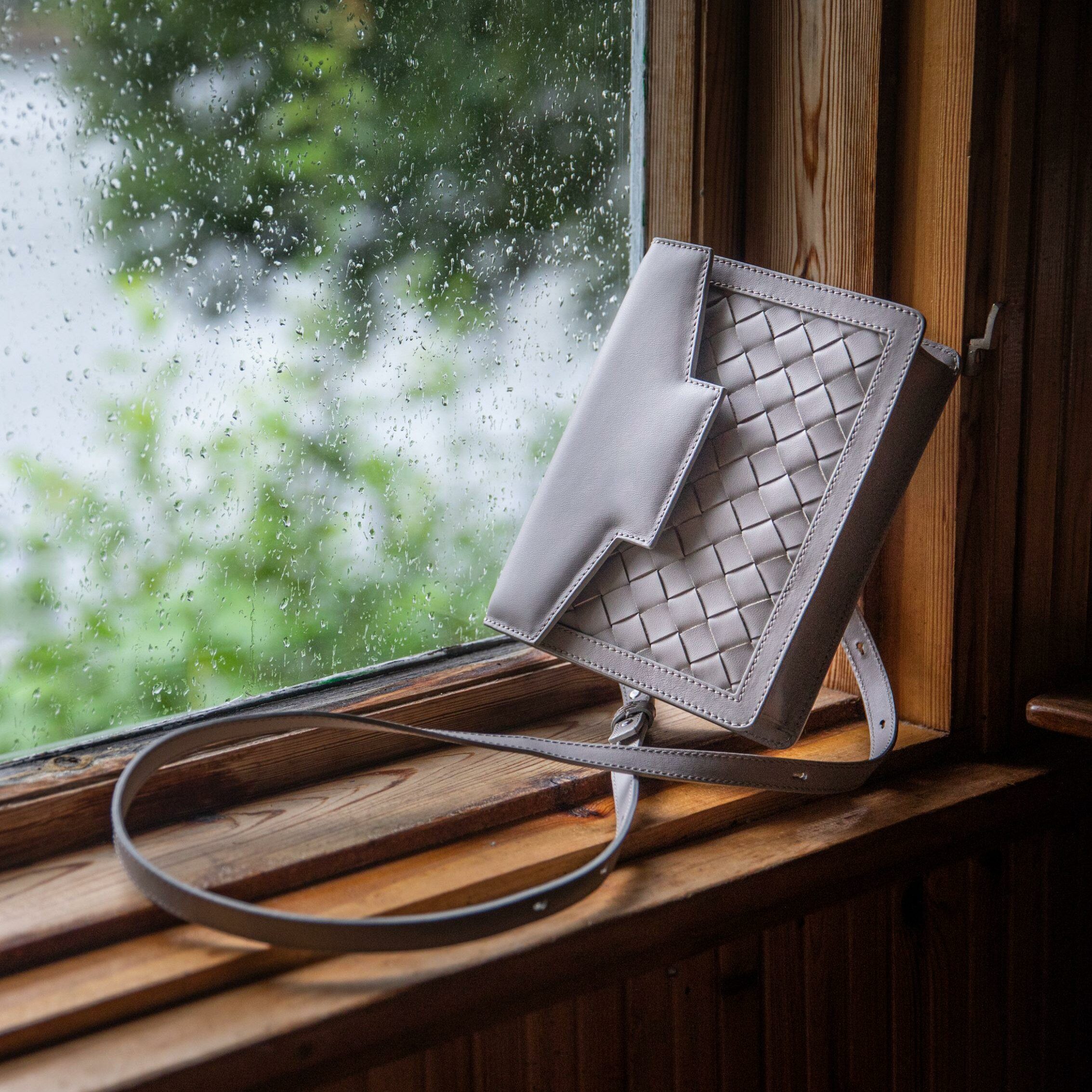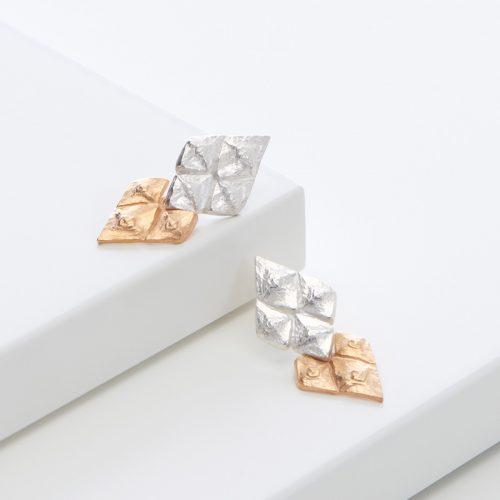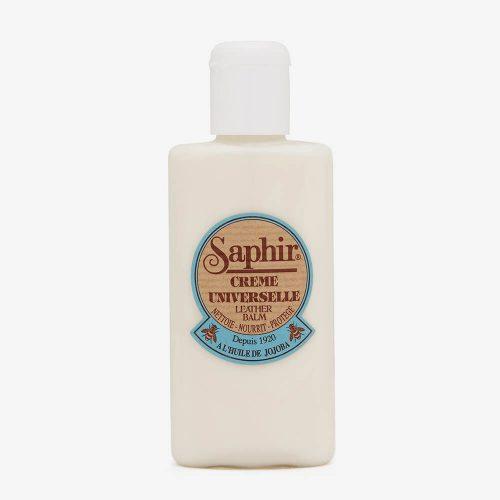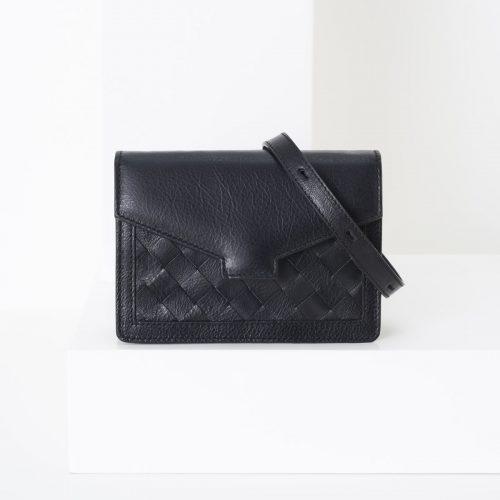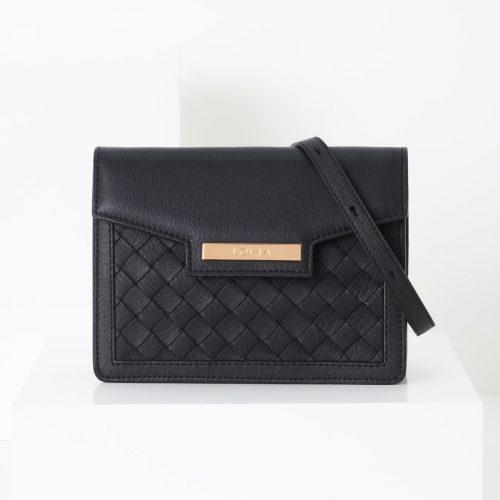Hakola
furniture excess leather
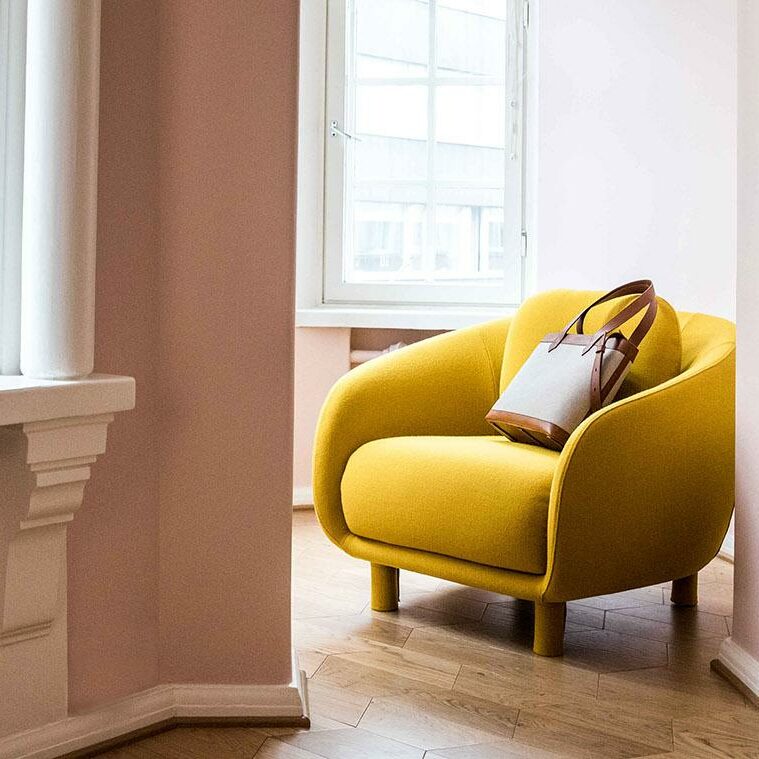
Sustainable design into new purpose
At the heart of the circular economy stands the thought of utilising existing materials and resources best as possible. This is where our collaboration with Hakola also boils down to. The story of furniture company Hakola started in Jurva in 1963, when Eero Hakola decided to start up furniture-making, just like many others in the area at the time. As years passed, globalisation and shifted consumption habits left behind the local furniture making, and by the turn of the century only a handful of factories persevered. Hakola’s story presents an exception; they are still going strong, and onto the third generation. We could not be more glad, because this also means that the high quality standards of Hakola make their way into our bags in the form of material, as their cutting waste receives new life with Lovia.
ESTABLISHED: 1963
EMPLOYEES: 35
LOCATION: JURVA, SUOMI
From leather sofas to leather bags
Hakola sustainability thinking begins from timeless and user-driven design. Time and durability are key in furniture, so material choices are crucial. This also means that the scrap leather that winds up into our bags has the same amazing qualities. Our bags also stand the test of time, meaning less need for consumption when one bag can stick by your side for longer. From the upholstering process of Hakola leather sofas, there are smaller pieces leftover as cutting waste, even though the cutting is done most carefully and with saving the material in mind. These pieces too small for furniture use are collected and next they find their place on our designer Outi’s table, where she created new trash treasures from them.
So, now you know how the leather ends up from Jurva to Helsinki. But where does the leather originally come from? Fine leathers and nubuck Hakola sources from Denmark, and the vegetable tanned leather comes from Ahlskog, Kruunupyy, Finland.
Greetings from Jurva
We want to give our partners a chance to have their voice heard because without them the actual utilisation of the trash material would not become reality. Here we gathered greetings, bits and pieces from everyday life at Hakola.
"We do our part in keeping furniture production and carpentry know-how alive in Finland. Our local way of producing, as well as using Finnish partners guarantee, that the environmental burden from manufacturing and delivery to the customer is minimised. Materials come to us from as close as possible, mostly from Finland. In material choices we prioritise quality, because the most durable product is also the most sustainable. We have also made concrete changes at our factory in Jurva. Energy use has been diminished despite growing production numbers. Currently the factory is heated with wooden pellets and an air-source heat pump. We have also moved to use LED-lighting and have acquired new, more energy efficiency machinery. We also installed solar panels in the spring of 2020, which cover all our electricity needs.
I have watched the amazing story of Lovia closely from the very beginning, and it has been wonderful to collaborate with a brand that is truly sustainable and responsible. We want to cut back on creation of excess to the minimum. It is wonderful to see that this excess receives new life in the hands of Lovia!”
- Annaleena Hakola, creative director & CEO, Hakola
Where can we do better?
We are already doing great things together with Hakola, but minimising the burden to our environment is an ongoing process, never truly finished. So, there is always room for improvement.
Part of the materials used by Hakola, such as foam rubber, leather and part of the fabrics will present challenges in the future, looking from the environmental standpoint. We wish to support and inspire them in the process of developing these material choices and discovering more sustainable options. This means materials with less carbon emissions, recycled and easily recyclable materials. This way, the sofas and their excess cutting waste bags would be even less of a burden to our precious planet. If Hakola furniture would in the future be made from recycled materials, the leftovers ending up in our bags would already have one cycle of recycling under their belt. Sounds pretty good, right?
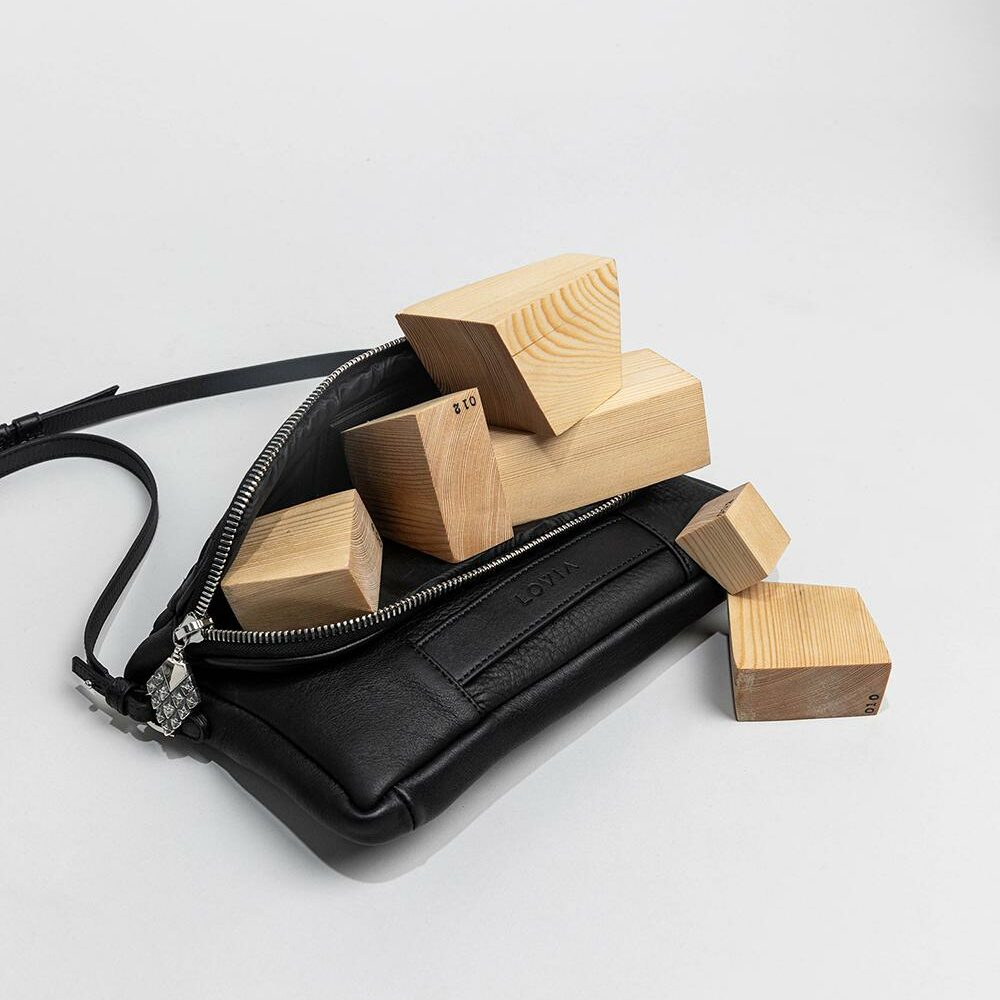
Hakola
furniture excess leather
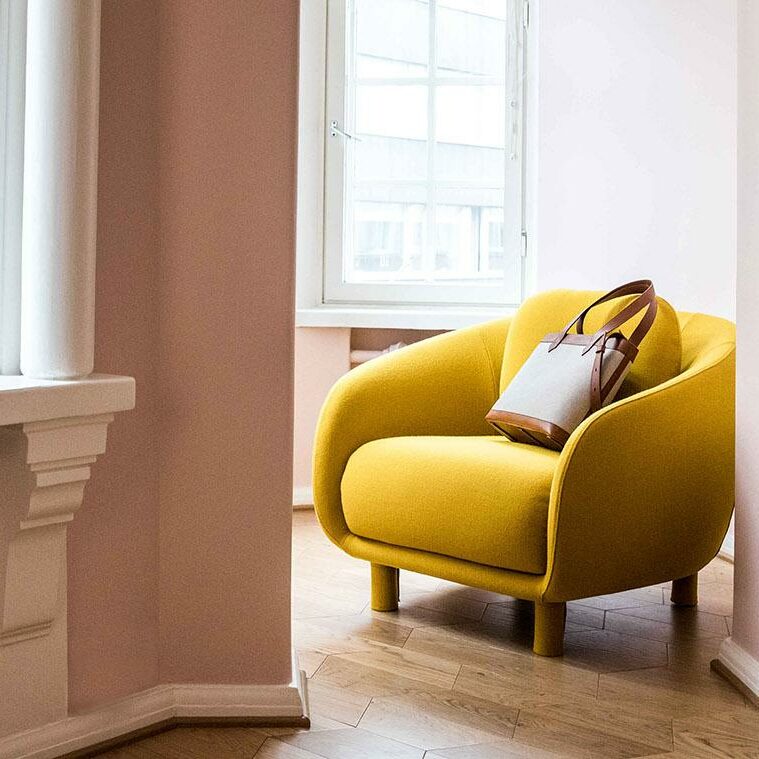
Sustainable design into new purpose
At the heart of the circular economy stands the thought of utilising existing materials and resources best as possible. This is where our collaboration with Hakola also boils down to. The story of furniture company Hakola started in Jurva in 1963, when Eero Hakola decided to start up furniture-making, just like many others in the area at the time. As years passed, globalisation and shifted consumption habits left behind the local furniture making, and by the turn of the century only a handful of factories persevered. Hakola’s story presents an exception; they are still going strong, and onto the third generation. We could not be more glad, because this also means that the high quality standards of Hakola make their way into our bags in the form of material, as their cutting waste receives new life with Lovia.
ESTABLISHED: 1963
EMPLOYEES: 35
LOCATION: JURVA, SUOMI
From leather sofas to leather bags
Hakola sustainability thinking begins from timeless and user-driven design. Time and durability are key in furniture, so material choices are crucial. This also means that the scrap leather that winds up into our bags has the same amazing qualities. Our bags also stand the test of time, meaning less need for consumption when one bag can stick by your side for longer. From the upholstering process of Hakola leather sofas, there are smaller pieces leftover as cutting waste, even though the cutting is done most carefully and with saving the material in mind. These pieces too small for furniture use are collected and next they find their place on our designer Outi’s table, where she created new trash treasures from them.
So, now you know how the leather ends up from Jurva to Helsinki. But where does the leather originally come from? Fine leathers and nubuck Hakola sources from Denmark, and the vegetable tanned leather comes from Ahlskog, Kruunupyy, Finland.
Greetings from Jurva
We want to give our partners a chance to have their voice heard because without them the actual utilisation of the trash material would not become reality. Here we gathered greetings, bits and pieces from everyday life at Hakola.
"We do our part in keeping furniture production and carpentry know-how alive in Finland. Our local way of producing, as well as using Finnish partners guarantee, that the environmental burden from manufacturing and delivery to the customer is minimised. Materials come to us from as close as possible, mostly from Finland. In material choices we prioritise quality, because the most durable product is also the most sustainable.
We have also made concrete changes at our factory in Jurva. Energy use has been diminished despite growing production numbers. Currently the factory is heated with wooden pellets and an air-source heat pump. We have also moved to use LED-lighting and have acquired new, more energy efficiency machinery. We also installed solar panels in the spring of 2020, which cover all our electricity needs.
I have watched the amazing story of Lovia closely from the very beginning, and it has been wonderful to collaborate with a brand that is truly sustainable and responsible. We want to cut back on creation of excess to the minimum. It is wonderful to see that this excess receives new life in the hands of Lovia!”
- Annaleena Hakola, creative director & CEO, Hakola
Where can we do better?
We are already doing great things together with Hakola, but minimising the burden to our environment is an ongoing process, never truly finished. So, there is always room for improvement.
Part of the materials used by Hakola, such as foam rubber, leather and part of the fabrics will present challenges in the future, looking from the environmental standpoint. We wish to support and inspire them in the process of developing these material choices and discovering more sustainable options. This means materials with less carbon emissions, recycled and easily recyclable materials. This way, the sofas and their excess cutting waste bags would be even less of a burden to our precious planet. If Hakola furniture would in the future be made from recycled materials, the leftovers ending up in our bags would already have one cycle of recycling under their belt. Sounds pretty good, right?

